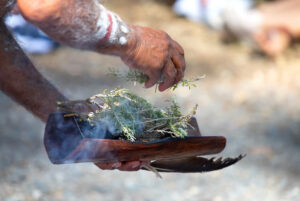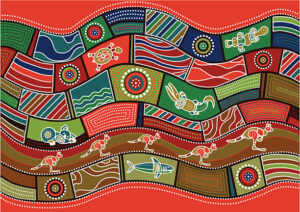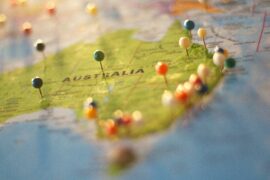Contents
What is Australia ethnicity breakdown?
Australia, often hailed as the land down under, is a melting pot of cultures, boasting a rich tapestry of ethnic diversity. In this article, we delve deep into the intricate mosaic of Australia’s ethnic breakdown, exploring its historical roots, major ethnic groups, socio-economic aspects, cultural contributions, and the challenges and opportunities presented by this vibrant diversity.
Historical Context
Australia’s ethnic landscape is deeply rooted in its history, beginning with the Indigenous Australians, the First Nations people who inhabited the continent for thousands of years. Despite being the original custodians of the land, Indigenous Australians have faced centuries of marginalization and dispossession.
For example, the forced removal of Indigenous children from their families, known as the Stolen Generations, represents one of the darkest chapters in Australia’s history, highlighting the systemic injustices faced by Indigenous communities.
Following European colonization in the late 18th century, waves of immigrants from various parts of the world began to reshape the demographic makeup of Australia. The post-World War II era witnessed a significant influx of migrants, particularly from Europe, seeking new opportunities in the land down under.
This marked the beginning of Australia’s transformation into a multicultural society, with migrants from countries such as Italy, Greece, and Germany contributing to the nation’s cultural diversity.
Major Ethnic Groups
Anglo-Celtic Australians
The Anglo-Celtic Australians, predominantly of British and Irish descent, form the largest ethnic group in Australia. Their influence permeates various aspects of Australian culture, from language to customs and traditions.
For example, the English language, inherited from British settlers, serves as the primary means of communication in Australia. Additionally, cultural practices such as afternoon tea and sporting traditions like cricket and rugby have become integral parts of Australian identity.
European Australians
Australia is home to a diverse array of European communities, each contributing to the nation’s cultural fabric. Italian Australians, Greek Australians, German Australians, and others have left an indelible mark on Australia’s culinary landscape, architecture, and arts scene.
For instance, the vibrant Italian community in Melbourne has transformed the city’s culinary scene, with renowned Italian restaurants and cafes offering authentic cuisine. Similarly, Greek Australians have made significant contributions to Australian culture, including the annual Greek Glendi festival, which celebrates Greek music, dance, and food.
Asian Australians
In recent decades, Asian Australians have become increasingly prominent, reflecting the growing ties between Australia and the Asia-Pacific region. Chinese Australians, Indian Australians, Vietnamese Australians, and others bring with them a rich heritage and diverse cultural practices, adding to the vibrancy of Australian society.
For example, Chinese Australians have played a significant role in shaping Australia’s cultural landscape, with Chinese New Year celebrations held in cities across the country. Likewise, Indian Australians have introduced traditional Indian cuisine, music, and dance to Australian culture, enriching the nation’s cultural tapestry.
Middle Eastern and North African Australians
Australia’s Middle Eastern and North African communities, including Lebanese, Turkish, Egyptian, and Iranian Australians, contribute to the nation’s cultural diversity. Despite facing challenges, such as stereotypes and discrimination, these communities play a vital role in shaping Australia’s multicultural identity.
For instance, Lebanese Australians have introduced flavors of the Middle East to Australian cuisine, with dishes such as falafel, hummus, and tabbouleh becoming popular across the country. Similarly, Turkish Australians have brought their rich cultural heritage to Australia, with Turkish festivals, music, and cuisine celebrated in communities nationwide.
Indigenous Australians
Indigenous Australians, despite being the original inhabitants of the land, continue to face socio-economic disparities and systemic injustices. Efforts to address historical injustices and promote reconciliation are ongoing, as Australia strives to build a more inclusive and equitable society.
For example, initiatives such as the National Apology to the Stolen Generations and the Close the Gap campaign aim to address disparities in health, education, and employment experienced by Indigenous Australians. Additionally, Indigenous cultural festivals, art exhibitions, and storytelling events showcase the rich cultural heritage of Australia’s First Nations people, fostering greater understanding and appreciation among all Australians.
Ethnic Diversity in Australian Society
Australia’s multiculturalism policy, enshrined in law, celebrates the nation’s diversity and promotes social cohesion. However, ethnic enclaves and communities continue to exist, reflecting the complex interplay between identity, belonging, and cultural heritage. For example, suburbs such as Cabramatta in Sydney and Footscray in Melbourne have large concentrations of Vietnamese and African communities, respectively, where residents maintain strong cultural ties while contributing to the broader Australian society.
Language diversity is another hallmark of Australia’s ethnic landscape, with numerous languages spoken across the country. This linguistic richness is a testament to the cultural mosaic that defines contemporary Australia. For instance, in addition to English, languages such as Mandarin, Arabic, Italian, and Greek are spoken widely in communities across Australia, reflecting the diverse linguistic backgrounds of its residents.
Religion and belief systems also reflect Australia’s ethnic diversity, with adherents of various faiths coexisting harmoniously. Interfaith dialogue and cooperation are essential for fostering understanding and mutual respect among different religious communities.
For example, religious festivals such as Diwali, Eid al-Fitr, and Hanukkah are celebrated by communities across Australia, providing opportunities for people of different faiths to come together and celebrate their shared values of peace, compassion, and community spirit.
Socio-Economic Aspects
Despite the cultural contributions of ethnic communities, socio-economic disparities persist. Indigenous Australians, in particular, face entrenched disadvantage in areas such as education, employment, and income. Addressing these disparities requires concerted efforts and targeted policies aimed at promoting equity and social justice.
For example, programs such as the Indigenous Employment Parity Initiative and the Indigenous Advancement Strategy seek to improve employment outcomes and economic opportunities for Indigenous Australians, empowering them to build brighter futures for themselves and their communities.
Cultural Contributions and Integration
Australia’s ethnic communities have made significant contributions to the nation’s cultural landscape. From arts and entertainment to cuisine and sports, diverse influences enrich Australian society and foster cross-cultural exchange. Embracing this diversity enhances social cohesion and promotes a sense of belonging for all Australians.
For example, multicultural festivals such as the Multicultural Eid Festival and the Chinese New Year Festival showcase the talents and traditions of Australia’s diverse communities, attracting visitors from all walks of life and fostering greater appreciation for cultural diversity.
Challenges and Opportunities
While Australia’s ethnic diversity is a source of strength, it also presents challenges. Managing ethnic tensions and promoting social harmony requires ongoing dialogue and understanding. Policy implications, including addressing systemic inequalities and strengthening multicultural initiatives, are essential for building a more inclusive society.
For example, initiatives such as the National Anti-Racism Framework and the Australian Multicultural Council aim to promote social cohesion and combat discrimination, ensuring that all Australians can participate fully in society regardless of their background.
Conclusion
In conclusion, Australia’s ethnic breakdown reflects the nation’s rich tapestry of cultures, histories, and identities. From Indigenous Australians to the waves of immigrants who have made Australia their home, each ethnic group contributes to the country’s unique multicultural identity.
Embracing this diversity, while addressing challenges and promoting social equity, is essential for building a more inclusive and cohesive society. As Australia continues to evolve, its ethnic diversity will remain a cornerstone of its national identity, shaping the country’s future for generations to come.





